24/7 Helpline:
(866) 899-111424/7 Helpline:
(866) 899-1114
Learn more about Xanax Rehab centers in Virginia
Xanax Rehab in Other Cities

Other Insurance Options

Magellan Health

Optum

Choice Care Network

Ambetter

AllWell

Highmark

Access to Recovery (ATR) Voucher

United Health Care

Horizon Healthcare Service

Holman Group

Lucent

State Farm

Meritain

Coventry Health Care

MVP Healthcare

Optima

BHS | Behavioral Health Systems

WellCare Health Plans

Evernorth

Health Partners

The CARITAS Healing Place
The CARITAS Healing Place is a non-profit rehab located in Richmond, Virginia. The CARITAS Healing P...

BrightView Chesapeake
BrightView is an addiction treatment provider for adults, based in Chesapeake, Vermont. They also pr...

Eastern Shore Community Services
Eastern Shore Community Services is a public rehab located in Parksley, Virginia. Eastern Shore Comm...

Salvation Army – Adult Rehabilitation Center
Salvation Army - Adult Rehabilitation Center is located in Virginia Beach, Virginia. Salvation Army ...

Goochland Powhatan Community Services
Goochland Powhatan Community Services is a public rehab located in Powhatan, Virginia. Goochland Pow...

Spero Health Petersburg
Spero Health Petersburg is a private rehab located in Petersburg, Virginia. Spero Health Petersburg ...

Sentara – Behavioral Health Services
Sentara – Behavioral Health Services is a private rehab located in Suffolk, Virginia. Sentara – Beha...

Liberty Point Behavioral Healthcare
Liberty Point Behavioral Healthcare is a private rehab located in Staunton, Virginia. Liberty Point ...

Northwestern Community Services
Northwestern Community Services is a private rehab located in Winchester, Virginia. Northwestern Com...

The CARITAS Healing Place for Men
The CARITAS Healing Place for Men provides addiction treatment services for adults in Richmond, Virg...

Family Insight
Family Insight is a private rehab located in Roanoke, Virginia. Family Insight specializes in the tr...

Richmond Private Methadone Clinic
Richmond Private Methadone Clinic is a state licensed dual-diagnosis drug and alcohol addiction trea...

Goochland Powhatan Community Services
Goochland Powhatan Community Services is a public rehab located in Goochland, Virginia. Goochland Po...

Recovery Unplugged – Northern Virginia
Recovery Unplugged – Northern Virginia is a public rehab located in Annandale, Virginia. Recovery Un...

Community Services Board – Petersburg Counseling Services
Community Services Board - Petersburg Counseling Services offers outpatient treatment for adults and...

Rappahannock Area Community Services Board – Jackson Street
Rappahannock Area Community Services Board – Jackson Street is a public rehab located in Fredericksb...

The Salvation Army – Alcohol and Drug Addiction
The Salvation Army – Alcohol and Drug Addiction is a non-profit rehab located in Alexandria, Virgini...

Phoenix House
Phoenix House, located in Arlington, Virginia, is a substance abuse addiction and co-occurring disor...

National Counseling Group
National Counseling Group is a private rehab located in Manassas, Virginia. National Counseling Grou...

Barry Robinson Center
Barry Robinson Center is an addiction treatment provider for military-connected youth, in Norfolk, V...

Sandstone Care – Virginia
Sandstone Care Virginia is a treatment center for teens and young adults struggling with substance a...

The Farley Center
The Farley Center is a dual-diagnosis behavioral health provider for adults, located in Williamsburg...

Counseling Services
Counseling Services is a private rehab located in Richmond, Virginia. Counseling Services specialize...

Wythe Counseling Center
Wythe Counseling Center is a private rehab located in Wytheville, Virginia. Wythe Counseling Center ...

Community Services Board – Colonial Heights Counseling Services
Community Services Board - Colonial Heights Counseling Services offers outpatient treatment for indi...

McShin Foundation
McShin Foundation is a recovery community organization that offers drug and alcohol addiction treatm...

Henrico Area Mental Health
Henrico Area Mental Health is a public rehab located in Glen Allen, Virginia. Henrico Area Mental He...

New River Comprehensive Treatment Center
New River Comprehensive Treatment Center is a private rehab located in Galax, Virginia. New River Co...

Augusta Health – Recovery Choice
Augusta Health Recovery Choice is a Joint Commission accredited substance abuse rehab center in Fish...

Virginia Beach Psychiatric Center
Virginia Beach Psychiatric Center is a drug and alcohol rehab located in Virginia Beach, VA. They pr...

Pinnacle Treatment Centers – Pulaski Medical
Pinnacle Treatment Centers - Pulaski Medical is a private Detox Clinic located in Pulaski, VA. Pinna...

Eastern Shore Community Services – Substance Abuse
Eastern Shore Community Services – Substance Abuse is a non-profit rehab located in Parksley, Virgin...

Hunter Holmes McGuire Medical Center – Fredericksburg Community Based Outpatient Clinic
Fredericksburg VA Community Based Outpatient Clinic is located in Fredericksburg, Virginia. Frederic...

Life Center of Galax
Life Center of Galax is a leading accredited drug and alcohol addiction treatment center in the Gala...

Centra Health – Bridges Treatment Center
Centra Health is a co-occurring behavioral health treatment facility situated in Lynchburg, VA. It s...

Spero Health – Danville
Spero Health specializes in evidence based substance abuse treatment, integrating a trauma informed ...

Cumberland Mountain Community Services
Cumberland Mountain Community Services - 78 Rogers street offers outpatient services for individuals...

Pathways Treatment Center
Pathways Treatment Center is a private rehab located in Lynchburg, Virginia. Pathways Treatment Cent...

Edge Hill Retreat
Edge Hill Retreat is located in Winchester, Virginia. Edge Hill Retreat specializes in the treatment...

Fairfax Falls Church Community Services Board
Fairfax Falls Church Community Services Board provides outpatient programming for people with mental...

Rappahannock Area Community Services Board
Rappahannock Area Community Services Board is a private rehab located in Stafford, Virginia. Rappaha...

Virginia Beach Psychiatric Center – Adult Partial Hospitalization
Virginia Beach Psychiatric Center – Adult Partial Hospitalization is a private rehab located in Virg...
Rubicon – Outpatient Services
Rubicon – Outpatient Services is a private rehab located in Richmond, Virginia. Rubicon – Outpatient...

Henrico Area Mental Health – East Center Office
Henrico Area Mental Health – East Center Office is a public rehab located in Henrico, Virginia. Henr...

Chesterfield County Department of Mental Health Support Services (MHSS)
Chesterfield County Department of Mental Health Support Services (MHSS) is a community-focused initi...

Cumberland Mountain Community Services
Cumberland Mountain Community Services is a public rehab located in Tazewell, Virginia. Cumberland M...

Cumberland Mountain Community Services – 196 Cumberland Road
Cumberland Mountain Community Services – 196 Cumberland Road is a public rehab located in Cedar Bluf...

AppleGate Recovery
AppleGate Recovery is a private rehab located in Richmond, Virginia. AppleGate Recovery specializes ...

The Women’s Home
The Women’s Home, in Arlington, Virginia, is a 12 step-focused drug and alcohol rehab for adult wome...

Danville Regional Medical Center – Behavioral Health
Danville Regional Medical Center – Behavioral Health is a private rehab located in Danville, Virgini...

Winchester Community Mental Health Center
Winchester Community Mental Health Center in Winchester, Virginia, is an alcohol and drug addiction ...

Henrico Area Mental Health – Richmond Medical Park
Henrico Area Mental Health – Richmond Medical Park is a public rehab located in Richmond, Virginia. ...

Hampton Newport News – South Eastern Families
Hampton Newport News – South Eastern Families is a non-profit rehab located in Newport News, Virgini...

Norfolk Mental Health
Norfolk Mental Health is a public rehab located in Staunton, Virginia. Norfolk Mental Health special...

Rockbridge Area Community Services Board
Rockbridge Area Community Services Board is a public rehab located in Lexington, Virginia. Rockbridg...

North Spring Behavioral Health
North Spring Behavioral Health is an accredited behavioral health treatment center for children and ...
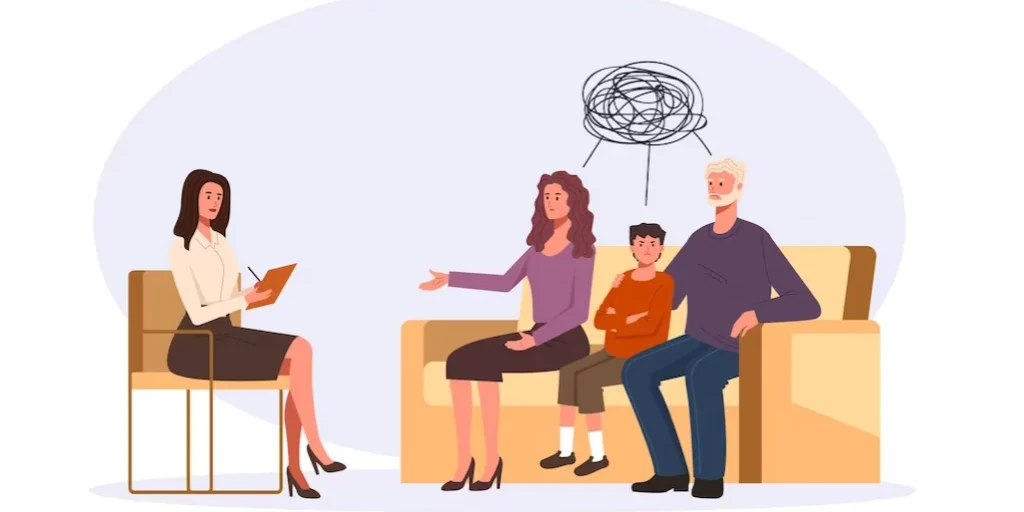
Recovery for Life
Recovery for Life is a non-profit treatment center located in Virginia Beach, Virginia. Recovery for...

Fairfax Falls Church Community Services Board – South County Center
Fairfax Falls Church Community Services Board - South County Center provides outpatient programming ...

Region Ten Community Services – Preston Avenue
Region Ten Community Services – Preston Avenue is a public rehab located in Charlottesville, Virgini...

Kolmac Outpatient Recovery Centers
Kolmac Outpatient Recovery Centers is a private rehab located in Arlington, Virginia. Kolmac Outpati...

Child and Youth Mental Health Substance Abuse Treatment – Independence Boulevard
Child and Youth Mental Health Substance Abuse Treatment – Independence Boulevard is a public rehab l...

Northwestern Community Services
Northwestern Community Services is an outpatient counseling clinic that offers treatment for patient...

Cumberland Mountain Community Services
Cumberland Mountain Community Services is a public rehab located in Cedar Bluff, Virginia. Cumberlan...

Fairfax Methadone Treatment Center (FMTC) – Annandale
Fairfax Methadone Treatment Center (FMTC) – Annandale is a private rehab located in Annandale, Virgi...

Eagles Nest Clubhouse – Rockbridge Area
Eagles Nest Clubhouse – Rockbridge Area is a public rehab located in Buena Vista, Virginia. Eagles N...

New Life for Youth – The Mercy House
The Mercy House at New Life For Youth is a faith based alcohol and drug addiction recovery center in...

Region Ten Community Services – Fluvanna Counseling Center
Region Ten Community Services – Fluvanna Counseling Center is a private rehab located in Palmyra, Vi...

Prince William County Behavioral Health
Prince William County Behavioral Health is a public rehab located in Manassas, Virginia. Prince Will...

Rappahannock Area Community Services Board
Rappahannock Area Community Services Board is a private rehab located in Ruther Glen, Virginia. Rapp...

Norfolk Community Services Board
Norfolk Community Services Board stands as a behavioral health center providing substance abuse trea...

Community Mental Health Activity
Community Mental Health Activity is a public rehab located in Arlington, Virginia. Community Mental ...

Western Tidewater Community Services Board – Franklin Center
Western Tidewater Community Services Board – Franklin Center is a public rehab located in Franklin, ...

Valley Community Services Board
Valley Community Services Board (VSCB)stands as a dual-diagnosis addiction rehab center located in S...

Middle Peninsula Northern Neck
Middle Peninsula Northern Neck - George Washington offers outpatient treatment for individuals with ...

Lighthouse Counseling
Lighthouse Counseling offers outpatient treatment for individuals with alcohol and/or substance addi...

Henrico Charles City Mental Health
Henrico Charles City Mental Health is a public rehab located in Providence Forge, Virginia. Henrico ...

Henrico Area Mental Health
Henrico Area Mental Health is a public rehab located in Providence Forge, Virginia. Henrico Area Men...

Danville Pittsylvania Crisis Stabilization Center
The Danville Pittsylvania Crisis Stabilization Center (DPCS) in Danville, VA delivers prompt and res...

Hanover County Community Service Board
Hanover County Community Service Board is a public rehab located in Ashland, Virginia. Hanover Count...

Psychology Associates – Orange
Psychology Associates – Orange is a private rehab located in Orange, Virginia. Psychology Associates...

Maryview Behavioral Medicine
Mayview Behavioral Medicine in Portsmouth, Virginia, is focused on providing substance abuse treatme...

Valley Behavioral Health
Valley Behavioral Health is a private rehab located in Woodstock, Virginia. Valley Behavioral Health...

Family Services – Alcohol and Drug Counseling
Family Services – Alcohol and Drug Counseling is a private rehab located in Roanoke, Virginia. Famil...

Halifax Behavioral Health Center
Halifax Behavioral Health Center is a non-profit rehab located in South Boston, Virginia. Halifax Be...

Piedmont Community Services
Piedmont Community Services (PCS) is a behavioral health treatment center in Stuart, VA. The center ...

Family Counseling Center for Recovery – Radford
Located in Richmond, Virginia, The Family Counseling Center for Recovery (FCCR) Radford facility is ...

Multicultural Clinical Center
Multicultural Clinical Center is a private rehab located in Springfield, Virginia. Multicultural Cli...

Edgewood Group Family Services
Edgewood Group Family Services is a private rehab located in Richmond, Virginia. Edgewood Group Fami...

New Life for Youth – Main Office
New Life for Youth - Main Office is a rehab facility located in Richmond, VA. New Life for Adults an...

Sagebrush Treatment
Sagebrush Treatment Center has multiple locations in McLean, Great Falls, and Vienna Virginia. Sageb...

American Addiction Treatment Center
American Addiction Treatment Center is a private rehab located in Newport News, Virginia. American A...

Family Counseling Center for Recovery
Family Counseling Center for Recovery is a private rehab located in Richmond, Virginia. Family Couns...

Addiction Recovery Systems (ARS) on Pantrops
Addiction Recovery Systems provides Medication Assisted Treatment, Outpatient Treatment, and Assessm...

Clinch Valley Treatment Center
Clinch Valley Treatment Center is a private rehab located in Cedar Bluff, Virginia. Clinch Valley Tr...

Bacon Street Youth and Family Services
Bacon Street Youth and Family Services is a non-profit rehab located in Williamsburg, VA. Bacon Stre...

Recovery Center of Northern Virginia
Recovery Center of Northern Virginia offers a variety of services including outpatient, intervention...

Rappahannock Area Community Services Board
Rappahannock Area Community Services Board is a private rehab located in Spotsylvania, Virginia. Rap...

Richmond Behavioral Health Authority
Richmond Behavioral Health Authority is an organization dedicated to provide mental health and subst...

Life Work Outreach Services
Life Work Outreach Services is a private rehab located in Woodbridge, Virginia. Life Work Outreach S...

Recovery Center of Northern Virginia
Recovery Center of Northern Virginia offers a variety of services including outpatient, intervention...

Blue Ridge Behavioral Healthcare – The Burrell Center
Situated in Roanoke, Virginia, Blue Ridge Behavioral Healthcare - The Burrell Center is a drug and a...

New Season – Richmond Treatment Center
New Season - Richmond Treatment Center is a private rehab located in Richmond, VA. New Season - Rich...

Horizon Wellness Center
Horizon Wellness Center is located in Amherst, Virginia. Horizon Wellness Center is the primary publ...

Cumberland Mountain Community Services
Cumberland Mountain Community Services - Stillhouse Road is a counseling clinic located in Grundy, V...

Right Path – Richmond
Right Path - Richmond is an outpatient treatment center that couples medication with counseling and ...

VASAP – Virginia Alcohol Safety Action Program – Mount Rogers
Virginia Alcohol Safety Action Program (VASAP) - Mount Rogers provides substance abuse treatment for...

Navy Substance Abuse Rehabilitation Program – SARP
The Navy Substance Abuse Rehabilitation Service (SARP) is an alcohol and drug rehabilitation service...

Hampton VA Medical Center – Chesapeake Community – Based Outpatient Clinic
Chesapeake VA Community Based Outpatient Clinic is located in Chesapeake, Virginia. Chesapeake VA Co...

The Coleman Institute
The Coleman Institute stands as an accredited detox center in Richmond, VA for adults struggling wit...

Right Path
Brightview Chesapeake South Addiction Treatment Center is a drug and alcohol rehab located in Chesap...

Rockingham Memorial Hospital – Behavioral Health Services
Rockingham Memorial Hospital – Behavioral Health Services is a private rehab located in Harrisonburg...

Right Path
Right Path is an outpatient treatment center that couples medication with counseling and support. Ri...

Arlington County Community Services Board
Arlington County Community Services Board is a public rehab located in Arlington, Virginia. Arlingto...

Archstone Counseling & Treatment
Archstone Counseling & Treatment is a comprehensive addiction treatment center in Richmond, VA. The ...

Augusta Medical Center – Crossroads Mental Health
Augusta Medical Center – Crossroads Mental Health is a private rehab located in Fishersville, Virgin...

Inova Behavioral Health Outpatient Center at Merrifield Center
Inova Behavioral Health Outpatient Center at Merrifield Center is dedicated to provide mental health...

Gemeinschaft Home – Connection Points
Gemeinschaft Home is a private, non-profit, re-entry program regulated by the Virginia Department of...

Middle Peninsula Northern Neck – Bowden Street
Middle Peninsula Northern Neck - Bowden Street offers outpatient treatment for individuals with alco...

Memorial Hospital – Behavioral Health
Memorial Hospital – Behavioral Health is a private rehab located in Martinsville, Virginia. Memorial...

New Life for Youth – Men’s Ranch
New Life for Youth - Men's Ranch is a Christian-based residential treatment program for those women ...

New Season – Harrisonburg Treatment Center
New Season - Harrisonburg Treatment Center is a private rehab located in Harrisonburg, VA. New Seaso...

Northern Virginia Mental Health Institute
Northern Virginia Mental Health Institute is a public rehab located in Falls Church, Virginia. North...

Region Ten Community Services Board – Nelson Counseling Center
Region Ten Community Services Board - Nelson Counseling Center provides a variety of behavioral heal...

NRH Regional Rehabilitation at Ballston
NRH Regional Rehabilitation at Ballston is a private rehab located in Arlington, Virginia. NRH Regio...

Region Ten Community Services – Market Street
Region Ten Community Services – Market Street is a public rehab located in Charlottesville, Virginia...

Western Tidewater Mental Health Center – Saratoga Street
Western Tidewater Mental Health Center – Saratoga Street is a public rehab located in Suffolk, Virgi...

SAARA of Virginia
SAARA of Virginia is a grassroots recovery community organization that supports addiction prevention...

LewisGale Center – Behavioral Health
LewisGale Medical Center in Salem, Virginia, is a mental health and drug and alcohol rehabilitation ...

New River Valley Community Services – PACT – ICT
New River Valley Community Services (NRVCS) is the public provider of behavioral health services to ...

New River Valley Community Services – New Life Recovery Center
New River Valley Community Services (NRVCS) is the public provider of behavioral health services to ...

Riverside Behavioral Health Center
Riverside Behavioral Health Center is a substance abuse rehab center in Hampton, VA. It offers a com...

RRCS – Boxwood Recovery Center
Boxwood Recovery Center, a program of Rappahannock Rapidan Community Services, offers inpatient and ...
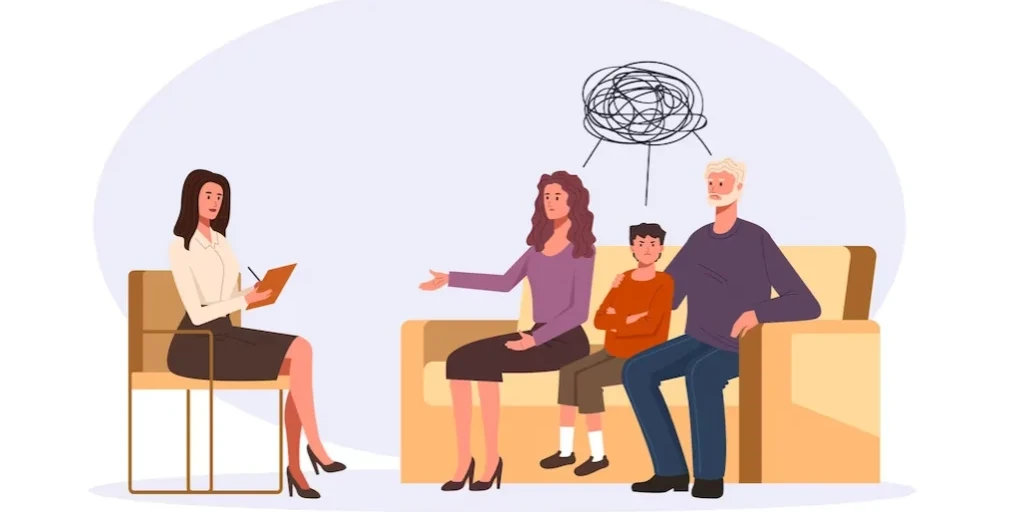
Right Path
Right Path is an outpatient treatment center that couples medication with counseling and support. Ri...

New River Valley Community Services
New River Valley Community Services is a public rehab located in Blacksburg, Virginia. New River Val...

Norfolk Mental Health
Norfolk Mental Health is a public rehab located in Norfolk, Virginia. Norfolk Mental Health speciali...

Pathways to Life
Pathways to Life offers outpatient services for children and adults who are struggling with mental h...

Norfolk Community Services Board – Olney Road
Norfolk Community Services Board – Olney Road is a public rehab located in Norfolk, Virginia. Norfol...

Virginia Beach Department of Human Services – Virginia Beach Boulevard
Virginia Beach Department of Human Services – Virginia Beach Boulevard is a public rehab located in ...

Harbor Point Behavioral Health Center
Harbor Point Behavioral Health Center is a private rehab located in Portsmouth, Virginia. Harbor Poi...

Fairfax Falls Church Community Services Board – Heritage Center
Fairfax Falls Church Community Services Board - Heritage Center provides outpatient programming for ...

Behavioral Health Group BHC – Virginia Beach Treatment Center
Behavioral Health Group BHC – Virginia Beach Treatment Center is a private rehab located in Virginia...

Hampton VA Medical Center – Virginia Beach Community Based Outpatient Clinic
The Hampton VA Medical Center stands as a comprehensive substance abuse rehab center in Virginia Bea...

Horizon Wellness Center – Landover
Horizon Wellness Center - Landover is located in Lynchburg, Virginia. Horizon Wellness Center - Land...

New River Valley Community Services
New River Valley Community Services is a private rehab located in Pearisburg, Virginia. New River Va...

Frontier Health – Scott County Behavioral Health Services
Frontier Health - Scott County Behavioral Health Services is located in Weber City, Virginia. Fronti...

Chesapeake Integrated Behavioral Health
Chesapeake Integrated Behavioral Health is a drug and alcohol rehab located in Chesapeake, VA. They ...

Bridging the Gaps
Bridging the Gaps is located in Winchester, Virginia. Bridging the Gaps is an integrative addiction ...

Newport News Behavioral Health
Newport News Behavioral Health is a private rehab located in Newport News, Virginia. Newport News Be...

SpiritWorks Foundation
SpiritWorks Foundation provides a variety of programs and services for children, youth, and adults a...

Right Path
Right Path is an outpatient treatment center that couples medication with counseling and support. Ri...

Highlands Community Mental Health
Highlands Community Mental Health is a private rehab located in Abingdon, Virginia. Highlands Commun...

Frontier Health – Lee County Behavioral Health Services
Frontier Health - Lee County Behavioral Health Services is located in Jonesville, Virginia. Frontier...

The Dimock Center – Piedmont Community Services
The Dimock Center – Piedmont Community Services is a private rehab located in Martinsville, Virginia...

Frontier Health – Independence House
Frontier Health – Independence House is a private rehab located in Big Stone Gap, Virginia. Frontier...

Horizon Wellness Center
Horizon Wellness Center is located in Rustburg, Virginia. Horizon Wellness Center - Campbell is the ...

Inova Behavioral Health Outpatient Center
Inova Behavioral Health Outpatient Center is a non-profit rehab located in Alexandria, Virginia. Ino...

Addiction Recovery Systems
Addiction Recovery Systems provides Medication Assisted Treatment, Outpatient Treatment, and Assessm...

Dominion Youth Services
Dominion Youth Services is a private rehab located in Richmond, Virginia. Dominion Youth Services he...

CleanSlate Outpatient Addiction Medicine Norfolk
CleanSlate Outpatient Addiction Medicine Norfolk is a private rehab located in Norfolk, Virginia. Cl...
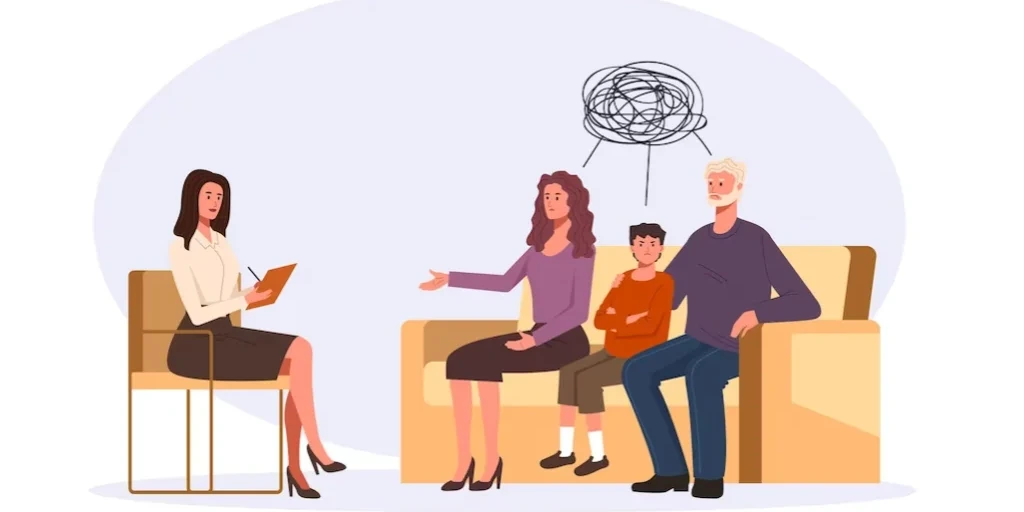
Center For Discovery Alexandria
Center For Discovery Alexandria is a private rehab located in Alexandria, Virginia. Center For Disco...

Behavioral Health Group – Chesapeake Treatment Cente
The Behavioral Health Group – Chesapeake Treatment Center can be found in Chesapeake, Virginia. This...

SaVida Health – Fredericksburg
SaVida Health – Fredericksburg is a private rehab located in Fredericksburg, Virginia. SaVida Health...

GHR Center for Addiction Recovery and Treatment
GHR Center for Addiction Recovery and Treatment is a private rehab located in Norfolk, Virginia. GHR...

Brightview Midlothian
Brightview Midlothian is a private rehab located in Midlothian, Virginia. Brightview Midlothian spec...

Praxis by Landmark of Norfolk
Praxis by Landmark of Norfolk is a private rehab located in Norfolk, Virginia. Praxis by Landmark of...

Thriveworks Chesterfield
Thriveworks Chesterfield is a private rehab located in Chester, Virginia. Thriveworks Chesterfield s...

Prince William County Behavioral Health
Prince William County Behavioral Health is a public rehab located in Woodbridge, Virginia. Prince Wi...

Avalon Recovery House
Avalon Recovery House is a private rehab located in Richmond, Virginia. Avalon Recovery House specia...

Spero Health – Woodstock
Spero Health – Woodstock is a private rehab located in Woodstock, Virginia. Spero Health – Woodstock...

Spero Health – Chesapeake
Pero Health – Chesapeake provides affordable and comprehensive local addiction treatment to men and ...

Spero Health – Staunton
Spero Health – Staunton is a private rehab located in Staunton, Virginia. Spero Health – Staunton sp...

Spero Health – Galax
Spero Health – Galax is a private rehab located in Galax, Virginia. Spero Health – Galax specializes...

Community Services Board – Dinwiddie Counseling Services
Community Services Board - Dinwiddie Counseling Services offers outpatient treatment for adults and ...

District 19 Substance Abuse Services Petersburg
District 19 Substance Abuse Services Petersburg is a non-profit rehab located in Petersburg, Virgini...

Hunter Holmes McGuire VA Medical Center – Fredericksburg at Southpoint Community Based Outpatient Clinic
Fredericksburg at Southpoint VA Community Based Outpatient Clinic is located in Fredericksburg, Virg...

Three Rivers Treatment Center Academy
Three Rivers Treatment Center Academy is a private rehab located in Kenbridge, Virginia. Three River...

Frontier Health – Wise County Behavioral Health Services
Frontier Health - Wise County Behavioral Health Services is located in Big Stone Gap, Virginia. Fron...

BrightView Virginia Beach
BrightView Virginia Beach is a private rehab located in Virginia Beach, Virginia. BrightView Virgini...

Thriveworks Counseling
Thriveworks Counseling is a private rehab located in Roanoke, Virginia. Thriveworks Counseling speci...

Summit Hill Wellness
Summit Hill Wellness provides online treatment programs for alcohol & substance abuse, gambling prob...

Project Chesapeake
Project Chesapeake is a private rehab located in Arlington, Virginia. Project Chesapeake specializes...

SaVida Health
SaVida Health, formerly Experience Wellness Centers, is a private healthcare practice located in Fro...

ReVIDA Recovery
ReVIDA Recovery, in Wytheville, Virginia, is an outpatient drug rehab for adults in opioid recovery....

Seneca Health Services – Crosswinds Center
Seneca Health Services – Crosswinds Center is a private rehab located in Maxwelton, West Virginia. S...

Crossroads of Virginia Beach
Crossroads of Virginia Beach is a private rehab located in Virginia Beach, Virginia. Crossroads of V...

Spero Health – Martinsville
Spero Health – Martinsville is a private rehab located in Martinsville, Virginia. Spero Health – Mar...

Insight Into Action Therapy
Insight Into Action Therapy is a private rehab located in Ashburn, Virginia. Insight Into Action The...

Agape Counseling and Therapeutic
Agape Counseling and Therapeutic is a private rehab located in Hampton, Virginia. Agape Counseling a...

Spero Health – Richmond (VA)
Spero Health – Richmond (VA) is a private rehab located in Richmond, Virginia. Spero Health – Richmo...

Kemet Health
Kemet Health is a private rehab located in Springfield, Virginia. Kemet Health is an outpatient clin...

Alamo Recovery Center
Alamo Recovery Center is a private rehab located in Petersburg, Virginia. Alamo Recovery Center spec...

SaVida Health
SaVida Health, formerly Experience Wellness Centers, is a private healthcare practice located in Woo...

Phoenix House – Outpatient Center
Phoenix House - Outpatient Center is located in Arlington, Virginia. Phoenix House - Outpatient Cent...

SaVida Health – Culpeper
SaVida Health – Culpeper is a private rehab located in Culpeper, Virginia. SaVida Health – Culpeper ...

SaVida Health – Abingdon
SaVida Health – Abingdon is a private rehab located in Abingdon, Virginia. SaVida Health – Abingdon ...

Spero Health – Petersburg
Spero Health – Petersburg is a private rehab located in Petersburg, Virginia. Spero Health – Petersb...

Hope Center Ministries – Danville Women’s Center
Hope Center Ministries - Women's Center is a rehab facility, specializes in the treatment of alcohol...

Horizon Wellness Center – Langhorne
Horizon Wellness Center - Langhorne is located in Lynchburg, Virginia. Horizon Wellness Center - Lan...

Spero Health – Winchester
Spero Health – Winchester is a private rehab located in Winchester, Virginia. Spero Health – Winches...

Safe Harbor Recovery Center
Safe Harbor Recovery Center is a private rehab located in Portsmouth, Virginia. Safe Harbor Recovery...

Spero Health – Norton
Spero Health – Norton is a private rehab located in Norton, Virginia. Spero Health – Norton speciali...

Broad Highway Recovery
Broad Highway Recovery is a nationwide addiction intervention, recovery monitoring, and consulting c...

Phoenix House – Girls Recovery Lodge
Located in a beautiful single-family home in Arlington, Virginia, Phoenix House - Girls Recovery Lod...

Lynchburg Comprehensive Treatment Center
Located in Lynchburg, Virginia, Lynchburg Comprehensive Treatment Center is a leading provider of me...

Spero Health – Dublin
Spero Health – Dublin is a private rehab located in Dublin, Virginia. Spero Health – Dublin speciali...

Spero Health – Charlottesville
Spero Health – Charlottesville is a private rehab located in Charlottesville, Virginia. Spero Health...
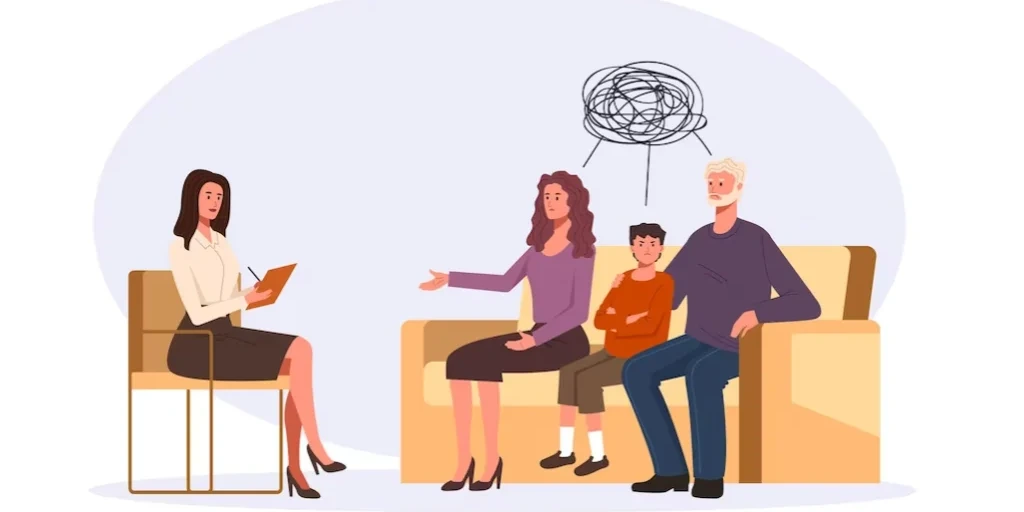
Hunter Holmes McGuire VA Medical Center – Emporia Community Based Outpatient Clinic
Emporia VA Community Based Outpatient Clinic is located in Emporia, Virginia. Emporia VA Community B...














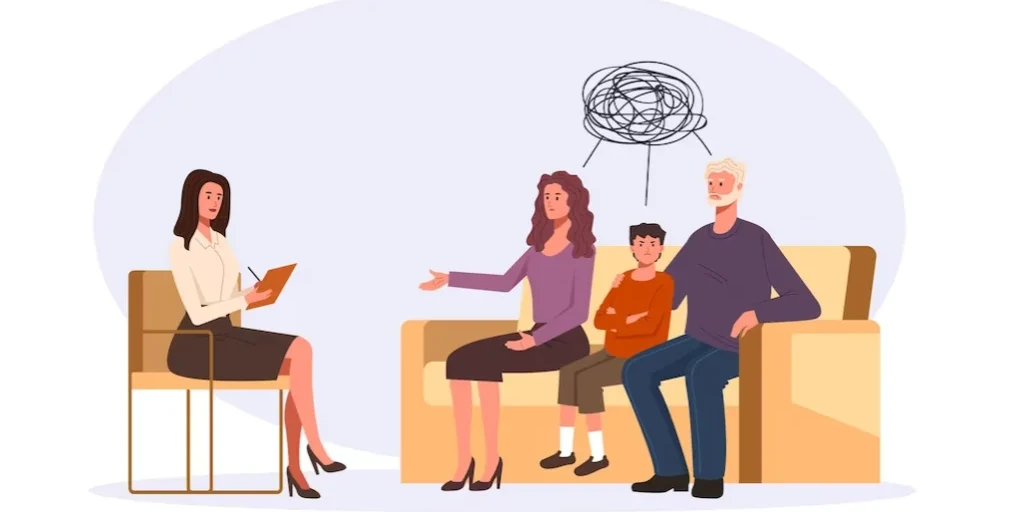





















































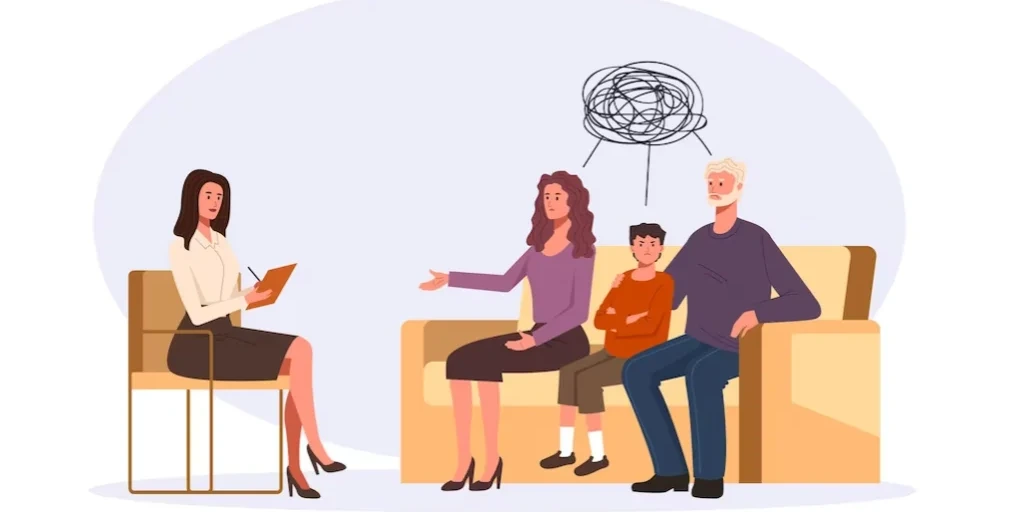





























































































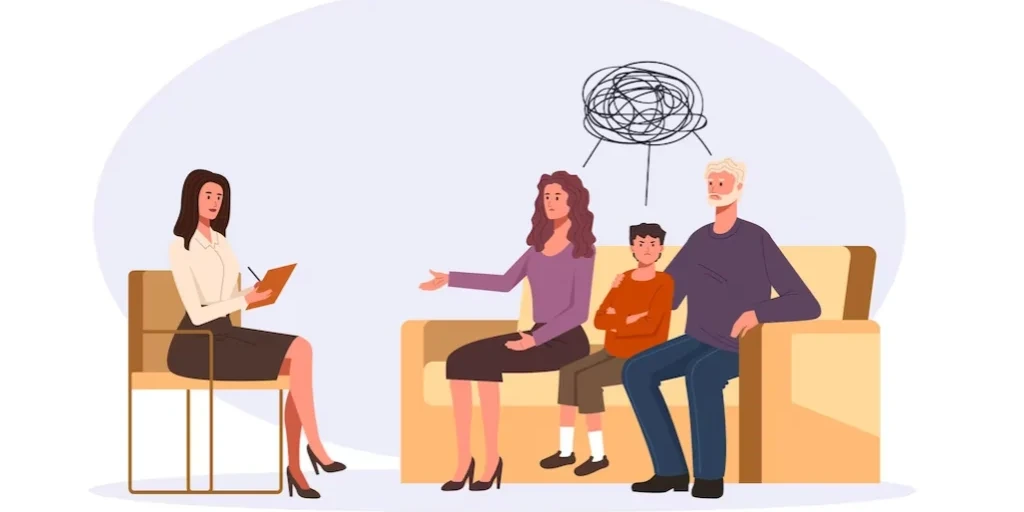









































































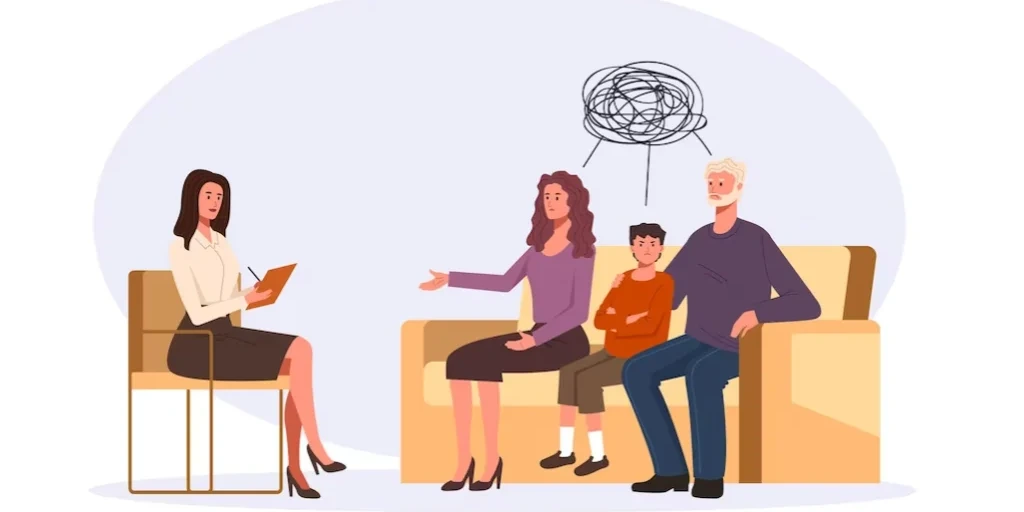















































































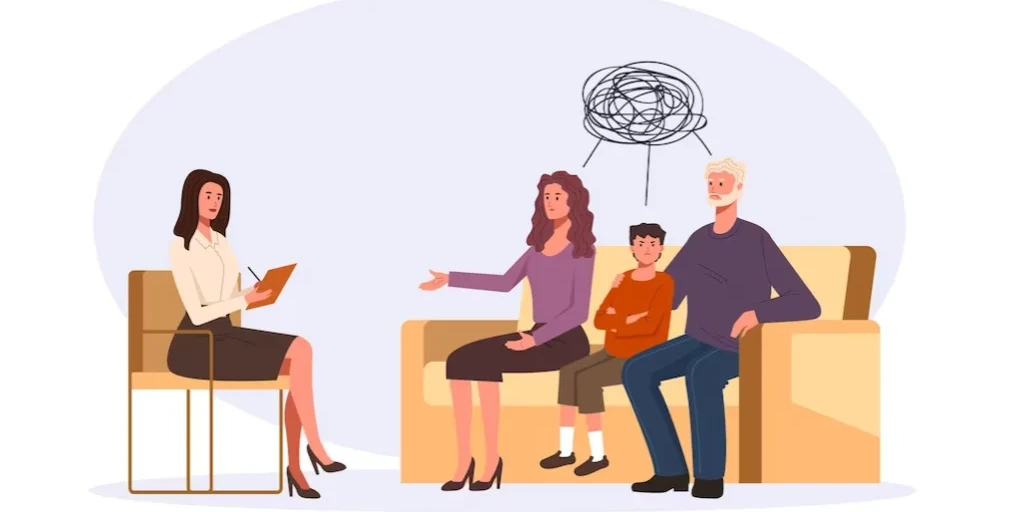










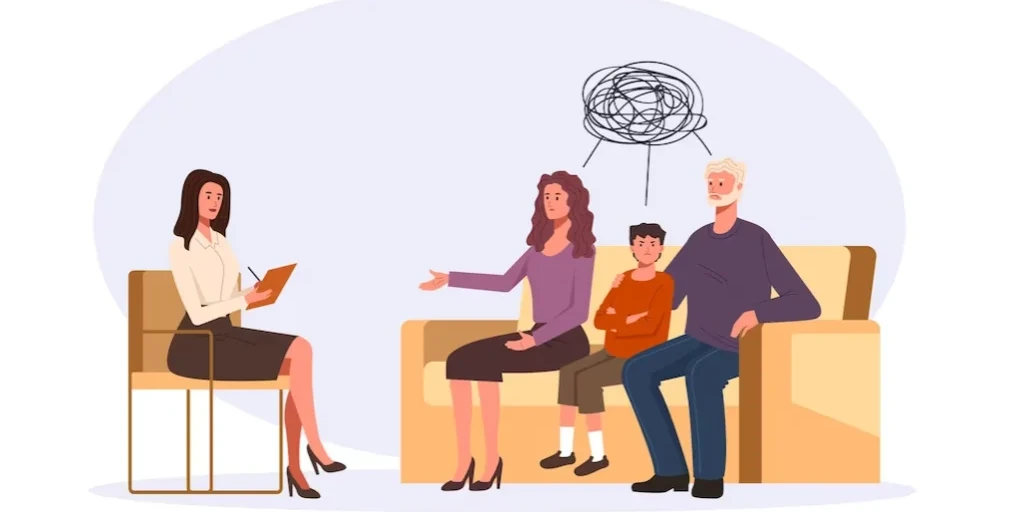









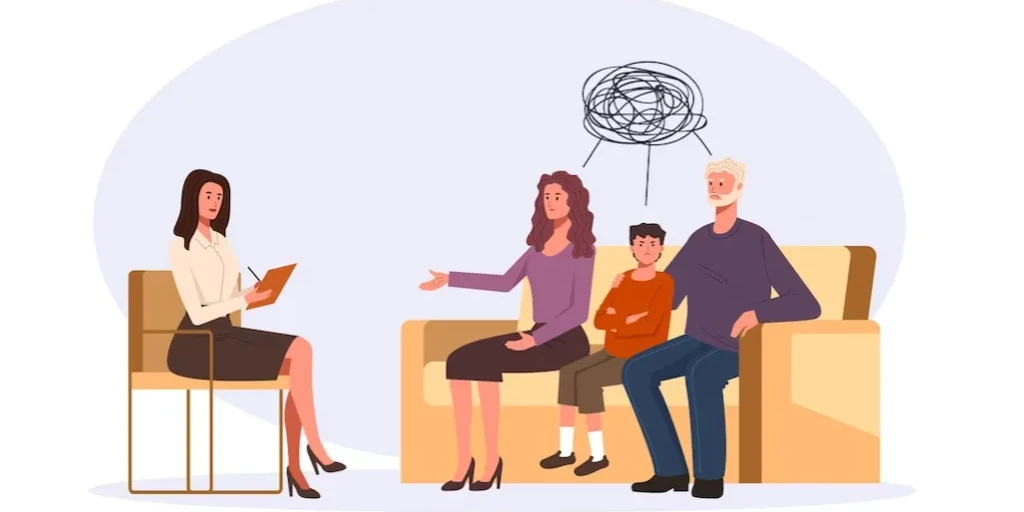










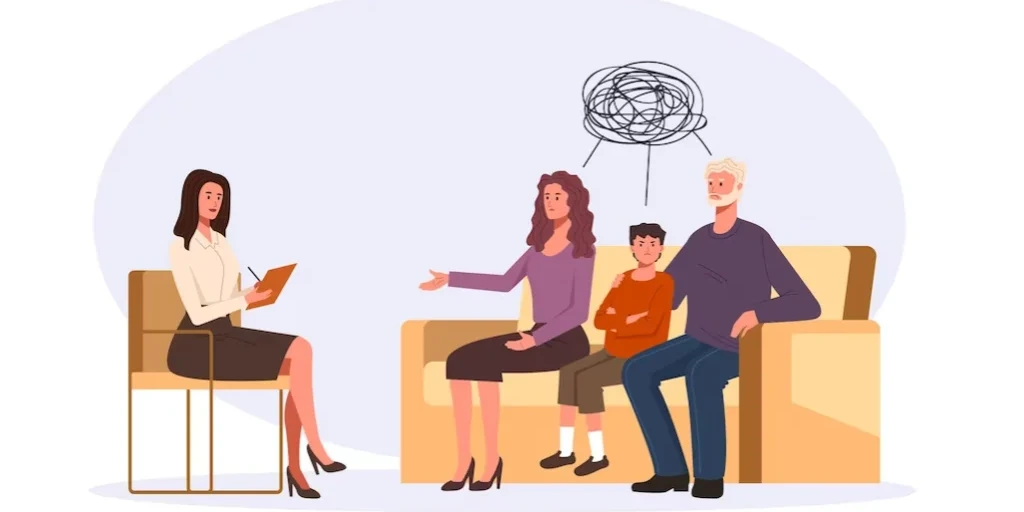





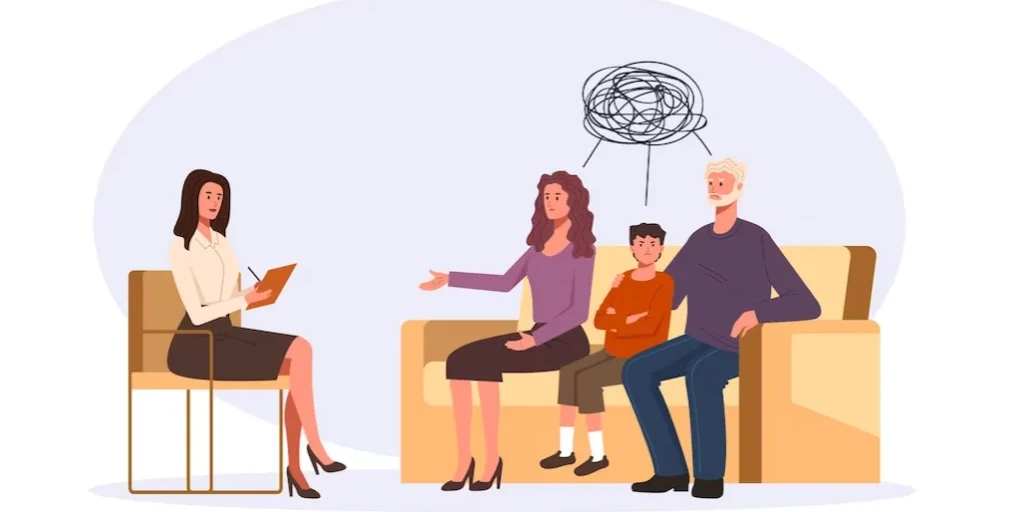








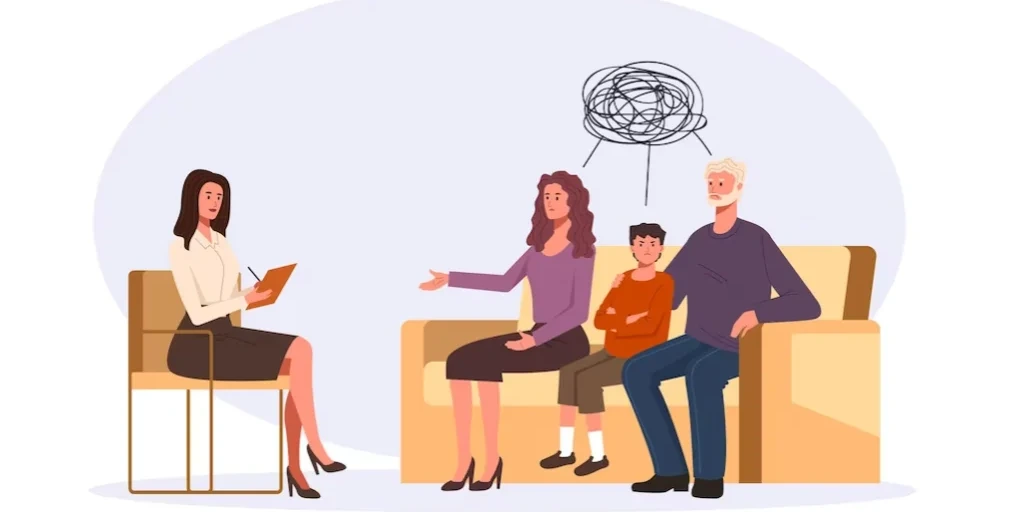













































































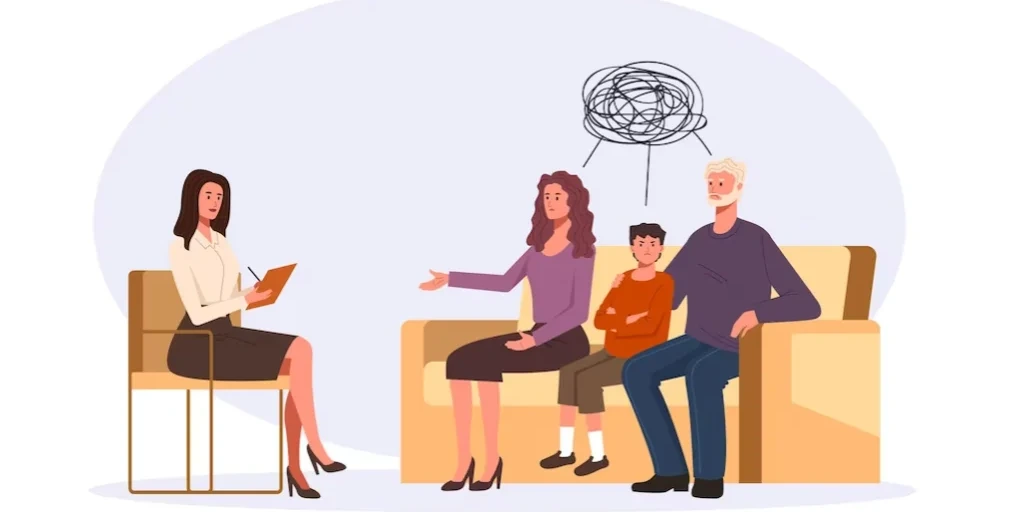
























































































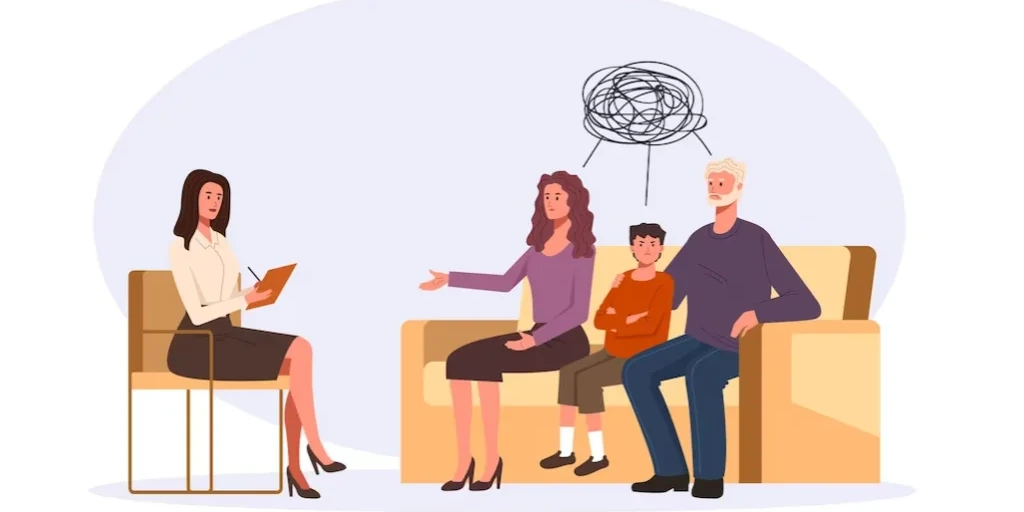



















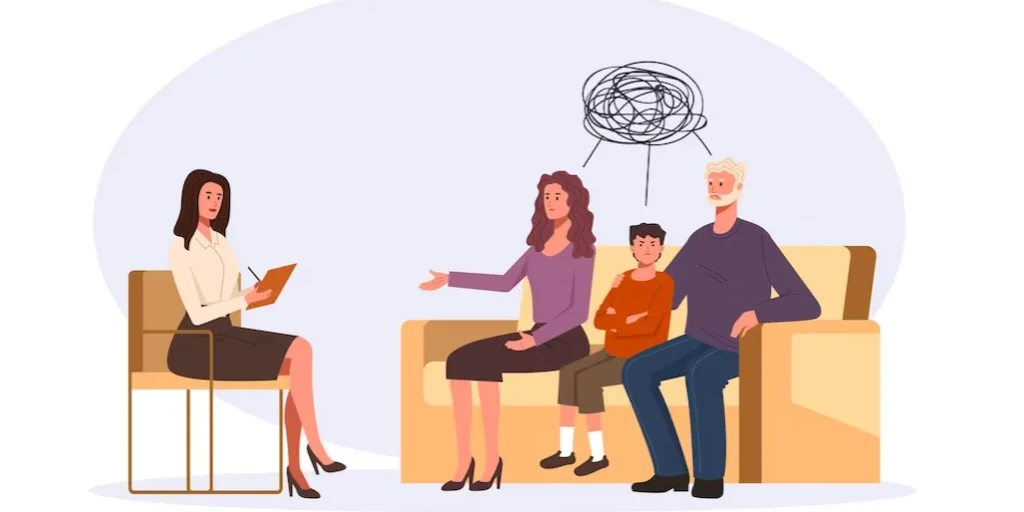













































































































































































Crossroads Petersburg
Crossroads Petersburg is a private rehab located in Petersburg, Virginia. Crossroads Petersburg spec...

Crossroads Suffolk
Crossroads Suffolk is a private rehab located in Suffolk, Virginia. Crossroads Suffolk specializes i...

Crossroads Treatment
Crossroads Treatment Centers is located in Danville, Virginia. Crossroads Treatment Centers' outpati...

Center for Rehabilitation and Development
Center for Rehabilitation and Development is a private rehab located in Lynchburg, Virginia. Center ...

Drug and Alcohol Services
Drug and Alcohol Services is a private rehab located in Richmond, Virginia. Drug and Alcohol Service...

Loudoun County Mental Health Center
Loudoun County Mental Health Center is a public rehab located in Sterling, Virginia. Loudoun County ...

Affinity Healthcare Group
Affinity Healthcare Group is a private rehab located in Chesapeake, Virginia. Affinity Healthcare Gr...

Washington Behavioral Health
Washington Behavioral Health is a private rehab located in Woodbridge, Virginia. Washington Behavior...

Family Focus Counseling
Family Focus Counseling is a private rehab located in Culpeper, Virginia. Family Focus Counseling sp...

Fairfax Falls Church Community Services Board – Cornerstones
Cornerstones is a residential treatment facility for adults struggling with substance abuse or menta...

Consolidated Counseling – Substance Abuse
Consolidated Counseling – Substance Abuse is a public rehab located in Quantico, Virginia. Consolida...

New Bridges – Outpatient
New Bridges - Outpatient is a private rehab located in Virginia Beach, VA. New Bridges - Outpatient ...

Family and Youth Foundation County
Family and Youth Foundation County is a private rehab located in Hampton, Virginia. Family and Youth...

Blue Ridge Behavioral Healthcare – Children and Family Services
Blue Ridge Behavioral Healthcare – Children and Family Services is a private rehab located in Roanok...

Brothers Keepers Ministry
Brothers Keepers Ministry is a private rehab located in Richmond, Virginia. Brothers Keepers Ministr...

Bethany Hall
Bethany Hall is a non-profit rehab located in Roanoke, Virginia. Bethany Hall specializes in the tre...

Changeworks Family Therapy
Changeworks Family Therapy is a private rehab located in Reston, Virginia. Changeworks Family Therap...

Clinical Alternatives – Outpatient
Clinical Alternatives – Outpatient is a private rehab located in Richmond, Virginia. Clinical Altern...

Cigna Healthcare – Mental Health and Substance Abuse
Cigna Healthcare – Mental Health and Substance Abuse is a private rehab located in Richmond, Virgini...

Adult Substance Abuse Program
Adult Substance Abuse Program is a private rehab located in Manassas, Virginia. Adult Substance Abus...

Chessen and Associates
Chessen and Associates is a private rehab located in Newport News, Virginia. Chessen and Associates ...

Hampton Roads Clinic – Opioid Treatment
Hampton Roads Clinic – Opioid Treatment is a private rehab located in Hampton, Virginia. Hampton Roa...

Passages
Passages is an outpatient rehab located in Martinsville, VA. Passages specializes in the treatment o...

Wise Enterprise
Wise Enterprise is a private rehab located in Richmond, Virginia. Wise Enterprise specializes in the...

AA – Alcoholics Anonymous – Euclid Road
AA – Alcoholics Anonymous – Euclid Road is a non-profit rehab located in Virginia Beach, Virginia. A...

Danville Pittsylvania Community Services
Danville Pittsylvania Community Services is a public rehab located in Danville, Virginia. Danville P...

Brighter Futures
Brighter Futures provides Intensive In-Home Counseling Services that focuses on the entire family un...

Mecklenburg Behavioral Health Center
Mecklenburg Behavioral Health Center is a non-profit rehab located in Boydton, Virginia. Mecklenburg...

Inova Behavioral Health – Outpatient
Inova Behavioral Health – Outpatient is a non-profit rehab located in Fairfax, Virginia. Inova Behav...

Blair Rehabilitation Services
Blair Rehabilitation Services is a private rehab located in Richmond, Virginia. Blair Rehabilitation...

Rockbridge Mental Health Clinic
Rockbridge Mental Health Clinic is a private rehab located in Lexington, Virginia. Rockbridge Mental...

Tide Water Recovery
Tide Water Recovery is a private rehab located in Urbanna, Virginia. Tide Water Recovery specializes...

Alcohol Safety Action Program
Alcohol Safety Action Program is a private rehab located in Fredericksburg, Virginia. Alcohol Safety...

Hope Harbor
Hope Harbor is a private rehab located in Danville, Virginia. Hope Harbor specializes in the treatme...

Region Ten
Region Ten is a public traditional rehab located in Charlottesville, Virginia. Region Ten specialize...

H T Substance Abuse Team
H T Substance Abuse Team is a private rehab located in Williamsburg, Virginia. H T Substance Abuse T...

Virginia Hospital Center – Behavioral Health Outpatient
Virginia Hospital Center – Behavioral Health Outpatient is a private rehab located in Arlington, Vir...

Dickenson County Behavioral Health Services
Dickenson County Behavioral Health Services is a public rehab located in Clintwood, Virginia. Dicken...

Impact Youth Services
Impact Youth Services is a counseling clinic located in Richmond, VA. Impact Youth Services speciali...

New Beginnings – Family Counseling
New Beginnings – Family Counseling is a private rehab located in Charlottesville, Virginia. New Begi...

Cumberland Community Counseling
Cumberland Community Counseling is a private rehab located in Richmond, Virginia. Cumberland Communi...

Alcoholism and Drug Detox Help
Alcoholism and Drug Detox Help is a private rehab located in Chesapeake, Virginia. Alcoholism and Dr...

Family Focus Counseling
Family Focus Counseling is a private rehab located in Warrenton, Virginia. Family Focus Counseling s...

Life Line Counseling Center
Life Line Counseling Center is a private traditional rehab located in Fairfax, VA. Life Line Counsel...

Anderson Counseling Services – Mental Health Skill Building
Anderson Counseling Services – Mental Health Skill Building is a private rehab located in Lynchburg,...

Recovery Center of Richmond
Recovery Center of Richmond is a private rehab located in Richmond, Virginia. Recovery Center of Ric...

Central Virginia Community Prevention Services
Central Virginia Community Prevention Services is a private rehab located in Lynchburg, Virginia. Ce...

River City Comprehensive Counseling Services
River City Comprehensive Counseling Services is a private rehab located in Petersburg, Virginia. Riv...

Colonial Management Group
Colonial Management Group is a private rehab located in Richmond, Virginia. Colonial Management Grou...

Oxford House
Oxford House is a private rehab located in Winchester, Virginia. Oxford House specializes in the tre...

Rockbridge Area Community Services
Rockbridge Area Community Services is a private rehab located in Bacova, Virginia. Rockbridge Area C...

Meridian Psychotherapy
Meridian Psychotherapy is a private rehab located in Virginia Beach, VA. Meridian Psychotherapy spec...

Roanoke Treatment Center
Roanoke Treatment Center is a private rehab located in Roanoke, Virginia. Roanoke Treatment Center s...

Mental Health Community Support Services – The Center for Child and Family
Mental Health Community Support Services – The Center for Child and Family is a private rehab locate...

Unity Club
Unity Club is a non-profit rehab located in Falls Church, Virginia. Unity Club specializes in the tr...

Middle Peninsula Northern Neck
Middle Peninsula Northern Neck - Sharon Road offers outpatient treatment for individuals with alcoho...

Cumberland Mountain Community Services – 160 Rogers Street
Cumberland Mountain Community Services – 160 Rogers Street is a public rehab located in Lebanon, Vir...

Fairfax Falls Church Community Services Board – Crossroads
Fairfax Falls Church Community Services Board - Crossroads is a residential treatment facility for a...

Community Services Board – Surry Counseling Services
Community Services Board - Surry Counseling Services offers outpatient treatment for adults and adol...

Community Services of Virginia Beach
Community Services of Virginia Beach is a private rehab located in Virginia Beach, Virginia. Communi...

Al – Anon and Al – Ateen Public Information Service
Al – Anon and Al – Ateen Public Information Service is a non-profit rehab located in Richmond, Virgi...

Alexandria Community and Human Services – North Beauregard Street
Alexandria Community and Human Services – North Beauregard Street is a public rehab located in Alexa...

On the Mark Recovery Plus
On the Mark Recovery Plus is a private rehab located in Winchester, Virginia. On the Mark Recovery P...

Pathways Recovery Lodge
Pathways Recovery Lodge is an alcohol and drug rehab center located in Amherst, Virginia. They provi...

Genesis Exodus
Genesis Exodus is a private rehab located in Virginia Beach, Virginia. Genesis Exodus specializes in...

Estes Counseling Services
Estes Counseling Services is a private rehab located in Roanoke, Virginia. Estes Counseling Services...

Army Substance Abuse Program – ASAP
Army Substance Abuse Program – ASAP is a public rehab located in Fort Lee, Virginia. Army Substance ...

Blue Ridge Behavioral Healthcare – Rita Gliniecki Recovery Center
Blue Ridge Behavioral Healthcare – Rita Gliniecki Recovery Center is a public rehab located in Roano...

Alcohol Safety Action Program
Alcohol Safety Action Program - Page Avenue offers outpatient treatment for individuals with alcohol...

AA – Alcoholics Anonymous
AA – Alcoholics Anonymous is a non-profit rehab located in Lexington, Virginia. AA – Alcoholics Anon...

AA – Alcoholics Anonymous
AA – Alcoholics Anonymous is a non-profit rehab located in Roanoke, Virginia. AA – Alcoholics Anonym...

Community Services Board – Sussex Counseling Services
Community Services Board - Sussex Counseling Services offers outpatient treatment for adults and ado...

Dominion Psychiatric Associates – Virginia Beach
Dominion Psychiatric Associates – Virginia Beach is a private rehab located in Virginia Beach, Virgi...

Oxford House
Oxford House is a private rehab located in Hampton, Virginia. Oxford House specializes in the treatm...

Rockbridge Area Community Services Board
Rockbridge Area Community Services Board is a private rehab located in Hot Springs, Virginia. Rockbr...

Calvary Counseling Center
Calvary Counseling Center is a private rehab located in Manassas, Virginia. Calvary Counseling Cente...

Hampton Roads Clinic – Opioid Treatment
Hampton Roads Clinic – Opioid Treatment is a public rehab located in Newport News, Virginia. Hampton...

A Womans Place
A Womans Place is a private rehab located in Fredericksburg, Virginia. A Womans Place specializes in...

AA – Alcoholics Anonymous – Stepping Stones Men’s Group
AA – Alcoholics Anonymous – Stepping Stones Men’s Group is a non-profit rehab located in Sterling, V...

Community Residences – Crisis Stabilization
Community Residences – Crisis Stabilization is a private rehab located in Alexandria, Virginia. Comm...

Addiction Education Center
Addiction Education Center is a private rehab located in Pennington Gap, Virginia. Addiction Educati...

Crawford Rehabilitation Services
Crawford Rehabilitation Services is a private rehab located in Norfolk, Virginia. Crawford Rehabilit...

Arlington Rehabilitation
Arlington Rehabilitation is a private rehab located in Arlington, Virginia. Arlington Rehabilitation...

Mary Washington Hospital – Psychiatric
Mary Washington Hospital – Psychiatric is a private rehab located in Fredericksburg, Virginia. Mary ...

Faith and Family Advocates
Faith and Family Advocates is a private rehab located in Richmond, Virginia. Faith and Family Advoca...

Highlands Community Services – Oakview Avenue
Highlands Community Services - Oakview Avenue is a public rehab located in Bristol, VA. Highlands Co...

Oxford House – Marshall Street
Oxford House – Marshall Street is a private rehab located in Hampton, Virginia. Oxford House – Marsh...

A Better Life Counseling Services
A Better Life Counseling Services is a private rehab located in Roanoke, Virginia. A Better Life Cou...

Alcohol Safety Action Program
Alcohol Safety Action Program is a private rehab located in Charlottesville, Virginia. Alcohol Safet...

Addiction Services
Addiction Services is a public rehab located in Alexandria, Virginia. Addiction Services specializes...

River City Comprehensive Counseling Services
River City - Comprehensive Counseling Services is a private rehab located in Richmond, VA. River Cit...

Full Circle Ministries
Full Circle Ministries is a private rehab located in Richmond, Virginia. Full Circle Ministries spec...

Prince William Psychiatric Center
Prince William Psychiatric Center is a private rehab located in Manassas, Virginia. Prince William P...

Horizon Wellness Center – Court Street
Horizon Wellness Center - Court Street is located in Lynchburg, Virginia. Horizon Wellness Center - ...

New River Valley Community Services – Floyd Clinic
New River Valley Community Services (NRVCS) is the public provider of behavioral health services to ...

Substance Abuse Rehabilitation Program NAS Oceana
Substance Abuse Rehabilitation Program NAS Oceana is a public rehab located in Virginia Beach, Virgi...

Region Ten – Wellness Recovey Center
Region Ten – Wellness Recovey Center is a public rehab located in Charlottesville, Virginia. Region ...

Empowering Families Program
Empowering Families Program is a private rehab located in Culpeper, VA. Empowering Families Program ...

Independence Club
Located in Springfield, Virginia, the Independence Club is a drug and alcohol treatment program for ...

Living Free Health Services
Living Free Health Services is a private rehab located in Annandale, Virginia. Living Free Health Se...

Heartland Rehabilitation Services – Buchanan
Heartland Rehabilitation Services – Buchanan is a private rehab located in Roanoke, Virginia. Heartl...

Dual Recovery Center
Dual Recovery Center is a public rehab located in Charlottesville, Virginia. Dual Recovery Center sp...

Atlantic Psychiatric Services
Atlantic Psychiatric Services is a private rehab located in Virginia Beach, Virginia. Atlantic Psych...
Rubicon – Women’s Treatment Community
Rubicon Women's Treatment Community is a private alcohol and drug addiction treatment center, in Ric...

Richmond Behavioral Health Authority (RBHA) – Men’s Treatment Center Building
Richmond Behavioral Health Authority (RBHA) – Men’s Treatment Center Building is a drug and alcohol ...

All Care Family Services
All Care Family Services is a private rehab located in Richmond, Virginia. All Care Family Services ...

Region Ten Community Services Board – Crozet
Region Ten Community Services Board is a non-profit rehab located in Crozet, VA. Region Ten Communit...

Agape Counseling and Therapeutic
Agape Counseling and Therapeutic is a private rehab located in Franklin, Virginia. Agape Counseling ...

Sellati & Co. – Virginia Beach Methadone Clinic – VBMC
Sellati & Co. – Virginia Beach Methadone Clinic – VBMC is a private rehab located in Virginia Beach,...

Ethos Foundation
The Ethos Foundation is a non-profit Virginia corporation that has served Northern Virginia and its ...

Southside Community Services Board – Brunswick County
Southside Community Services Board is a public rehab located in Lawrenceville, VA. Southside Communi...

Family Counseling Centers for Recovery
Family Counseling Centers for Recovery is a private rehab located in Fredericksburg, Virginia. Famil...

Cascade Rehabilitation Counseling
Cascade Rehabilitation Counseling is a private rehab located in Roanoke, Virginia. Cascade Rehabilit...
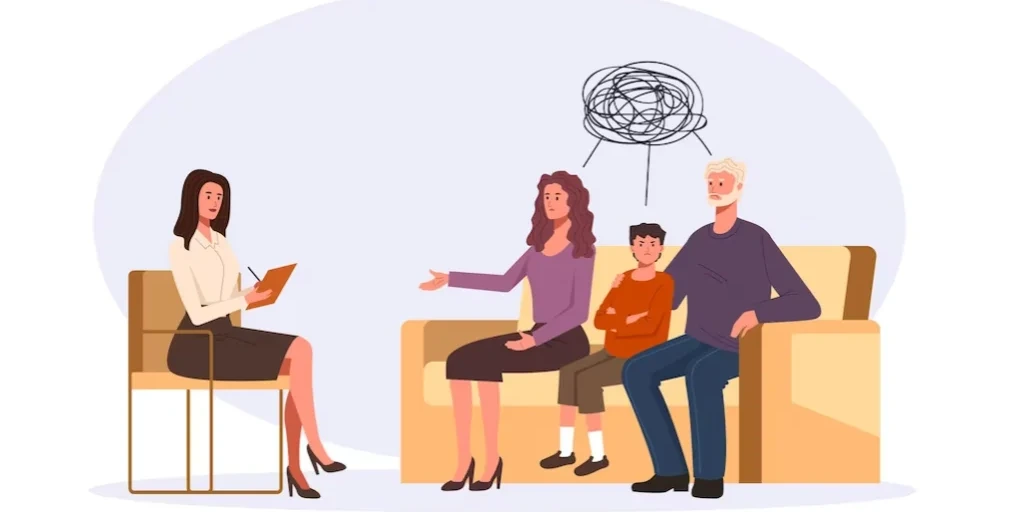
Starting Point Ministry
Starting Point Ministry is a private rehab located in Roanoke, Virginia. Starting Point Ministry spe...

AA – Alcoholics Anonymous
AA – Alcoholics Anonymous is a non-profit rehab located in Luray, Virginia. AA – Alcoholics Anonymou...

AA – Alcoholics Anonymous – North Madison Street
AA – Alcoholics Anonymous – North Madison Street is a non-profit rehab located in Richmond, Virginia...

Interchange
Interchange is a public rehab located in Abingdon, Virginia. Interchange specializes in the treatmen...

Medical Rehabilitation Consultants
Medical Rehabilitation Consultants is a private rehab located in Richmond, VA. Medical Rehabilitatio...

Hampton Newport News – Child and Adolescent Outpatient
Hampton Newport News – Child and Adolescent Outpatient is a public rehab located in Hampton, Virgini...

Portsmouth Behavioral Health
Portsmouth Behavioral Health is a public rehab located in Portsmouth, Virginia. Portsmouth Behaviora...

AA – Alcoholics Anonymous
AA – Alcoholics Anonymous is a non-profit rehab located in Lynchburg, Virginia. AA – Alcoholics Anon...

AA – Alcoholics Anonymous
AA – Alcoholics Anonymous is a non-profit rehab located in Stephenson, Virginia. AA – Alcoholics Ano...

AA – Alcoholics Anonymous
AA – Alcoholics Anonymous is a non-profit rehab located in Fairfax, Virginia. AA – Alcoholics Anonym...

AA – Alcoholics Anonymous
AA – Alcoholics Anonymous is a non-profit rehab located in Charlottesville, Virginia. AA – Alcoholic...

Fairfax Falls Church Community Services Board
Fairfax Falls Church Community Services Board provides outpatient programming for people with mental...

AA – Alcoholics Anonymous
AA – Alcoholics Anonymous is a non-profit rehab located in Waynesboro, Virginia. AA – Alcoholics Ano...

Community Services Board – Greensville Counseling Services
Community Services Board - Greensville Counseling Services offers outpatient treatment for adults an...

Fairfax Falls Church Community Services Board – Woodburn Place Crisis Care
Fairfax Falls Church Community Services Board - Woodburn Place Crisis Care provides short-term crisi...

Fairfax Falls Church Community Services Board – A New Beginning – Fairfax Detox Center
A New Beginning/Fairfax Detox Center is a residential treatment facility for adults struggling with ...

Hampton Newport News – Partners in Recovery
Hampton Newport News – Partners in Recovery is a drug and alcohol treatment center that supports adu...

Rappahannock General Hospital – Bridges Inpatient
Rappahannock General Hospital is a behavioral health treatment facility based in Kilmarnock VA. It o...

Hampton Newport News – Crisis Stabilization Center
Hampton Newport News – Crisis Stabilization Center is a public rehab located in Hampton, Virginia. H...

Colonial Behavioral Health – Child and Adolescent Services
The Colonial Behavioral Health Child and Adolescent Services facility in Williamsburg, VA provides c...

Autumnleaf Group
Autumnleaf Group is a private rehab located in Burke, Virginia. Autumnleaf Group specializes in the ...

Bruder Counseling Center
Bruder Counseling Center is a private rehab located in Virginia Beach, Virginia. Bruder Counseling C...

Cornerstone Counseling
Cornerstone Counseling is a private rehab located in Virginia Beach, Virginia. Cornerstone Counselin...

River City Comprehensive Counseling Services
River City Comprehensive Counseling Services is a private rehab located in Glen Allen, Virginia. Riv...

Nascoot Rehabilitation Services
Nascoot Rehabilitation Services is a private rehab located in Fairfax, Virginia. Nascoot Rehabilitat...

Region Ten Community Services Board
Region Ten Community Services Board is a public rehab located in Stanardsville, Virginia. Region Ten...

Partnership for Prevention of Substance Abuse
Partnership for Prevention of Substance Abuse is a private rehab located in Lynchburg, Virginia. Par...

Agape Counseling and Therapeutic
Agape Counseling and Therapeutic is a private rehab located in Norfolk, Virginia. Agape Counseling a...

Empowering Families
Empowering Families is a private rehab located in Charlottesville, Virginia. Empowering Families spe...

Western Tidewater Mental Health Center
Western Tidewater Mental Health Center is a private rehab located in Suffolk, Virginia. Western Tide...

Family Insight
Family Insight is a private rehab located in Richmond, Virginia. Family Insight specializes in the t...

Northern Virginia Family Service
Northern Virginia Family Service is a private rehab located in Falls Church, Virginia. Northern Virg...

Colonial Behavioral Health – George Washington Memorial Highway
Colonial Behavioral Health – George Washington Memorial Highway is a public rehab located in Yorktow...

Northwestern Community Services – Community House
Northwestern Community Services – Community House is a private rehab located in Winchester, Virginia...

Mental Health Support Services
Mental Health Support Services is a private rehab located in Hampton, Virginia. Mental Health Suppor...

New River Valley Community Services – Recovery Center
New River Valley Community Services (NRVCS) is the public provider of behavioral health services to ...

Fellowship Health Resources – Crisis Stabilization
Fellowship Health Resources – Crisis Stabilization is a private rehab located in Arlington, Virginia...

Rappahannock Area Community Services Board
Rappahannock Area Community Services Board is a public rehab located in King George, Virginia. Rappa...

Family Care Outpatient
Family Care Outpatient is a private rehab located in Richmond, Virginia. Family Care Outpatient spec...

Next Step Recovery House
Next Step Recovery House is a private rehab located in Richmond, Virginia. Next Step Recovery House ...

Albemarle Counseling
Albemarle Counseling Associates is a private counseling clinic located in Charlottesville, VA. Albem...

Alcohol Safety Action Program
Alcohol Safety Action Program - N. Central Ave. offers outpatient treatment for individuals with alc...

Transformed Support Services
Transformed Support Services is a private rehab located in Roanoke, Virginia. Transformed Support Se...

Pathways to Life
Pathways to Life offers outpatient services for children and adults who are struggling with mental h...

Fernwood Counseling Center
Fernwood Counseling Center is a public rehab located in Galax, Virginia. Fernwood Counseling Center ...
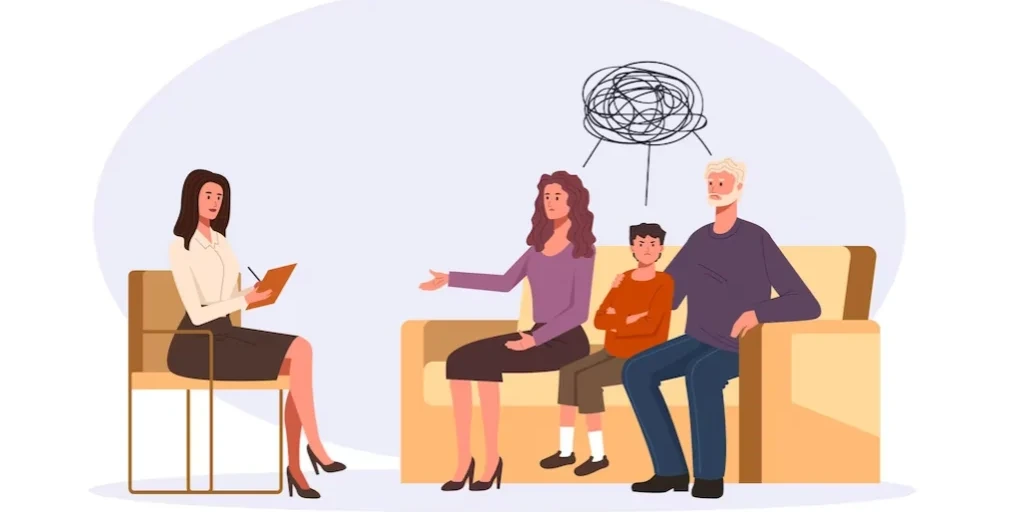
Oxford House – Pembroke
Oxford House – Pembroke is a drug and alcohol rehab facility located in Virginia Beach, VA. They pro...

New Season – Southside Treatment Center
Southside Treatment Center, located in Richmond, Virginia, is a dedicated facility under New Season,...

Women’s Center
Women’s Center is a private rehab located in Vienna, Virginia. Women’s Center specializes in the tre...

Offender Aid and Restoration
Offender Aid and Restoration is a private rehab located in Richmond, Virginia. Offender Aid and Rest...

New River Valley Community Services – New Horizons
New River Valley Community Services (NRVCS) is the public provider of behavioral health services to ...

Northwestern Community Services
Northwestern Community Services offers treatment for patients who require addiction treatment servic...

Rockingham Memorial Hospital – Outpatient Behavioral Health
Rockingham Memorial Hospital - Outpatient Behavioral Health is a non profit rehab located in Harriso...

In Home Clinical and Casework Services
In Home Clinical and Casework Services is a private rehab located in Norfolk, Virginia. In Home Clin...

New River Valley Community Services – Pulaski Center
New River Valley Community Services (NRVCS) is the public provider of behavioral health services to ...

The Virginia Center for Addiction Medicine
The Virginia Center for Addiction Medicine, in Richmond, Virginia, is an outpatient drug and alcohol...

Pathways to Life
Pathways to Life offers outpatient services for children and adults who are struggling with mental h...

Al Anon Family Groups
Al Anon Family Groups is a non-profit rehab located in Fairfax, Virginia. Al Anon Family Groups spec...

Middle Peninsula Northern Neck – East Stormont
Middle Peninsula Northern Neck - East Stormont offers outpatient treatment for individuals with alco...

Richmond Outpatient – Recovery
Richmond Outpatient – Recovery is a private rehab located in Richmond, Virginia. Richmond Outpatient...

AA – Alcoholics Anonymous
AA – Alcoholics Anonymous is a non-profit rehab located in Staunton, Virginia. AA – Alcoholics Anony...

Penrose Associates
Penrose Associates is a private rehab located in Midlothian, Virginia. Penrose Associates specialize...

T W Neumann and Associates
T W Neumann and Associates is a private rehab located in Portsmouth, Virginia. T W Neumann and Assoc...

Northwestern Community Services Board – Amherst Clinic
Northwestern Community Services Board - Amherst Clinic offers outpatient and intensive outpatient pr...

Community Services Board – Prince George Counseling
Community Services Board - Prince George Counseling Services offers outpatient treatment for adults ...

Total Health Concepts
Total Health Concepts is a private counseling clinic located in Vienna, VA. Total Health Concepts sp...

Natures New Hope Sensory
Natures New Hope Sensory is a private rehab located in Charlottesville, Virginia. Natures New Hope S...

Tidewater Psychotherapy Services
Tidewater Psychotherapy Services is a private rehab located in Virginia Beach, Virginia. Tidewater P...

Agape Counseling and Therapeutic
Agape Counseling and Therapeutic is a private rehab located in Belle Haven, Virginia. Agape Counseli...

Rappahannock Rapidan Community Services
Rappahannock Rapidan Community Services offers outpatient mental health/substance abuse and co-occur...

Inova Behavioral Health Outpatient
Inova Behavioral Health Outpatient is a drug and alcohol rehab located in Leesburg, VA. They provide...

Family Insight
Family Insight, located in Manassas, VA, focuses on enhancing well-being through evidence-based coun...

Al Anon
Al Anon is a non-profit rehab located in Falls Church, Virginia. Al Anon specializes in the treatmen...

Alexandria Community and Human Services – North Saint Asaph Street
Alexandria Community and Human Services – North Saint Asaph Street is a public rehab located in Alex...

New Choices Counseling
New Choices Counseling is dedicated to help teens, adults and families who are dealing with mental h...

Fairfax Falls Church Community Services Board – New Generations
Located in Vienna, Virginia, Fairfax Falls Church Community Services Board – New Generations is a dr...

Consolidated Substance Abuse Counseling Center – CSACC
Consolidated Substance Abuse Counseling Center (CSACC) is located in Quantico, Virginia. Consolidate...

AA – Alcoholics Anonymous
AA – Alcoholics Anonymous is a non-profit rehab located in Springfield, Virginia. AA – Alcoholics An...

AA – Alcoholics Anonymous
AA – Alcoholics Anonymous is a non-profit rehab located in Danville, Virginia. AA – Alcoholics Anony...

SaVida Health – Staunton
SaVida Health – Staunton is a private rehab located in Staunton, Virginia. SaVida Health – Staunton ...

Consumer Counselors
Consumer Counselors is a private rehab located in Midlothian, Virginia. Consumer Counselors speciali...

Chesterfield Community Services Board Chester House
Chesterfield Community Services Board - Chester House is a behavioral healthcare provider in Chester...
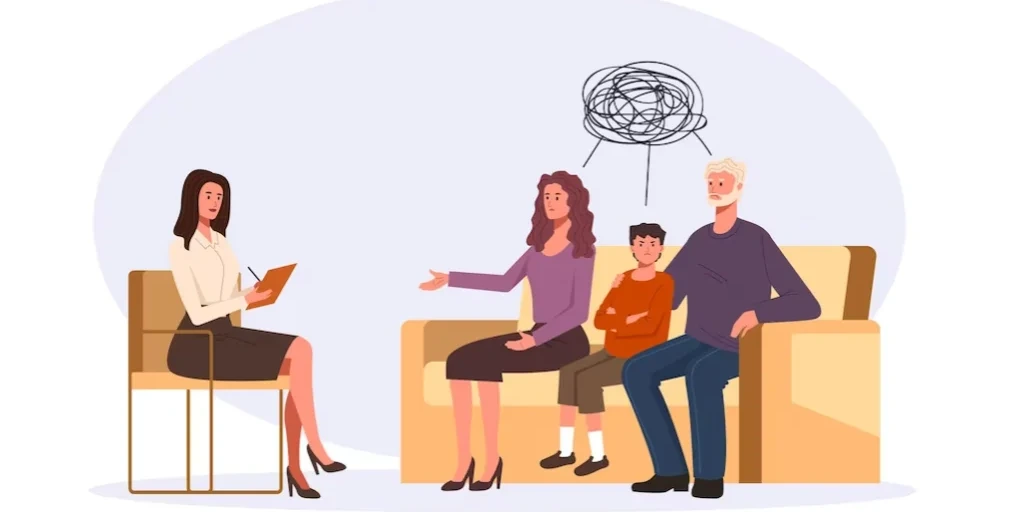
Victory Home
VASAP – Virginia Alcohol Safety Action Program – Mount Rogers is a drug and alcohol rehab and alcoho...

Family Advocacy Creating Education and Service – FACES
Family Advocacy Creating Education and Service – FACES is a private rehab located in Midlothian, Vir...

Encore Outpatient Services
Encore Outpatient Services is a public rehab located in Arlington, Virginia. Encore Outpatient Servi...

Highlands Community Services
Highlands Community Services provides outpatient services for children, adolescents and adults who a...

New River Valley Community Services
New River Valley Community Services is a private rehab located in Radford, Virginia. New River Valle...

PRS Mount Vernon
PRS Mount Vernon is a private rehab located in Alexandria, Virginia. PRS Mount Vernon specializes in...

True Recovery RVA
True Recovery RVA is a private rehab located in Richmond, Virginia. True Recovery RVA specializes in...

Leesburg Treatment Services
Leesburg Treatment Services is a private rehab located in Richmond, Virginia. Leesburg Treatment Ser...

Orchard Mountain Recovery
Orchard Mountain Recovery is a private rehab located in Charlottesville, Virginia. Orchard Mountain ...

Thriveworks Short Pump
Thriveworks Short Pump is a private rehab located in Henrico, Virginia. Thriveworks Short Pump speci...

Discovery Mood & Anxiety Program – Fairfax
Discovery Mood & Anxiety Program – Fairfax is a private rehab located in Fairfax, Virginia. Discover...

Spero Health – Front Royal
Spero Health – Front Royal is a private rehab located in Front Royal, Virginia. Spero Health – Front...

Recovery For the City
Recovery For the City is a private rehab located in Virginia Beach, Virginia. Recovery For the City ...

ADAPT
ADAPT is a private rehab located in Norfolk, Virginia. ADAPT specializes in the treatment of Substan...

Encore Recovery Solutions
Encore Recovery Solutions is a private rehab located in Fairfax, Virginia. Encore Recovery Solutions...

Bicycle Health – Virginia
Bicycle Health - Virginia is an online Medication Assisted Treatment Program. Bicycle Health - Virgi...

Counseling Interventions
Counseling Interventions is a private rehab located in Lignum, Virginia. Counseling Interventions sp...

Woodbridge Therapy Group
Woodbridge Therapy Group is a private rehab located in Woodbridge, Virginia. Woodbridge Therapy Grou...

New Life For Youth
New Life For Youth is a private rehab located in Richmond, Virginia. New Life For Youth specializes ...

Chesapeake Community Services Board
Chesapeake Community Services Board is a public rehab located in Chesapeake, Virginia. Chesapeake Co...

Behavioral Health Group Opioid Treatment Center – Glen Allen
Behavioral Health Group Opioid Treatment Center – Glen Allen is a private rehab located in Glen Alle...

Sellati & Co. – Woodbridge Methadone Treatment Center – WMTC
Sellati & Co. – Woodbridge Methadone Treatment Center – WMTC is a private rehab located in Manassas,...

Mount Rogers Community Services Board – Smyth Counseling Center
Mount Rogers Community Services Board – Smyth Counseling Center is a public rehab located in Marion,...

Groups Recover Together Richmond
Groups Recover Together Richmond is a private rehab located in Richmond, Virginia. Groups Recover To...

Wave City Care – Regeneration Addiction Recovery Group
Wave City Care - Regeneration Addiction Recovery Group is a non-profit rehab located in Virginia Bea...

Virginia Beach Department of Human Services – Mental Health
Virginia Beach Department of Human Services – Mental Health is a public rehab located in Virginia Be...

Virginia Beach Department of Human Services – Recovery Center
Virginia Beach Department of Human Services – Recovery Center is a public rehab located in Virginia ...

Colonial Behavioral Health – Merrimac Trail
Colonial Behavioral Health – Merrimac Trail is a public rehab located in Williamsburg, Virginia. Col...

Lancaster Clinical Counseling Association
Lancaster Clinical Counseling Association is a private rehab located in Great Falls, Virginia. Lanca...

Spero Health – Roanoke
Spero Health – Roanoke is a private rehab located in Roanoke, Virginia. Spero Health – Roanoke speci...

Newport Academy
Newport Academy is a private rehab located in Mclean, Virginia. Newport Academy specializes in the t...

Adult Outpatient Services
Adult Outpatient Services is a public rehab located in Virginia Beach, Virginia. Adult Outpatient Se...

Vanguard Services Unlimited Phoenix Program
Vanguard Services Unlimited Phoenix Program is a private rehab located in Arlington, Virginia. Vangu...

Center For Discovery Alexandria Outpatient
Center For Discovery Alexandria Outpatient is a public rehab located in Alexandria, Virginia. Center...

Right Path – Eastern Shore
Right Path - Eastern Shore is an outpatient treatment center that couples medication with counseling...

New Genesis Recovery Center
New Genesis Recovery Center is a private rehab located in Fredericksburg, Virginia. New Genesis Reco...

Addiction Care and Treatment
Addiction Care and Treatment Center is located in Woodbridge, Virginia. Addiction Care and Treatment...

EHS – Mental Health Skill Building & Crisis Stabilization Services
Mental Health Skill-Building & Crisis Stabilization Services is a private rehab located in Roanoke, ...

High Focus Centers
High Focus Centers is a private rehab located in Henrico, Virginia. High Focus Centers specializes i...

Hope Center Ministries – Axton Men’s Center
Hope Center Ministries is a faith based alcohol and drug abuse rehab facility in Axton, VA. Firmly r...

Landmark Recovery of Richmond
Landmark Recovery of Richmond is a private rehab located in Richmond, Virginia. Landmark Recovery of...

Kolmac Outpatient Recovery Centers
Kolmac Outpatient Recovery Centers is a private rehab located in Alexandria, Virginia. Kolmac Outpat...

Phoenix House – Counseling Center
Phoenix House - Counseling Center is located in Fairfax, Virginia. Phoenix House - Counseling Center...

Shenandoah Valley Teen Challenge
Shenandoah Valley Teen Challenge is a faith-based drug and alcohol program serving men and women who...

Hunter Holmes McGuire Medical Center – Charlottesville Community Based Outpatient Clinic
Charlottesville VA Community Based Outpatient Clinic is located in Charlottesville, Virginia. Charlo...

AA – Alcoholics Anonymous
AA – Alcoholics Anonymous is a non-profit rehab located in Alexandria, Virginia. AA – Alcoholics Ano...

MCCS Henderson Hall – Substance Abuse Combat Center – SACC
MCCS Henderson Hall - Substance Abuse Combat Center (SACC) is located in Arlington, Virginia. MCCS H...

Discovery Mood & Anxiety Program – Fairfax Station
Positive Directions was established in 1971 in Westport, CT as a volunteer effort by recovering alco...







































































































































































































































































































































